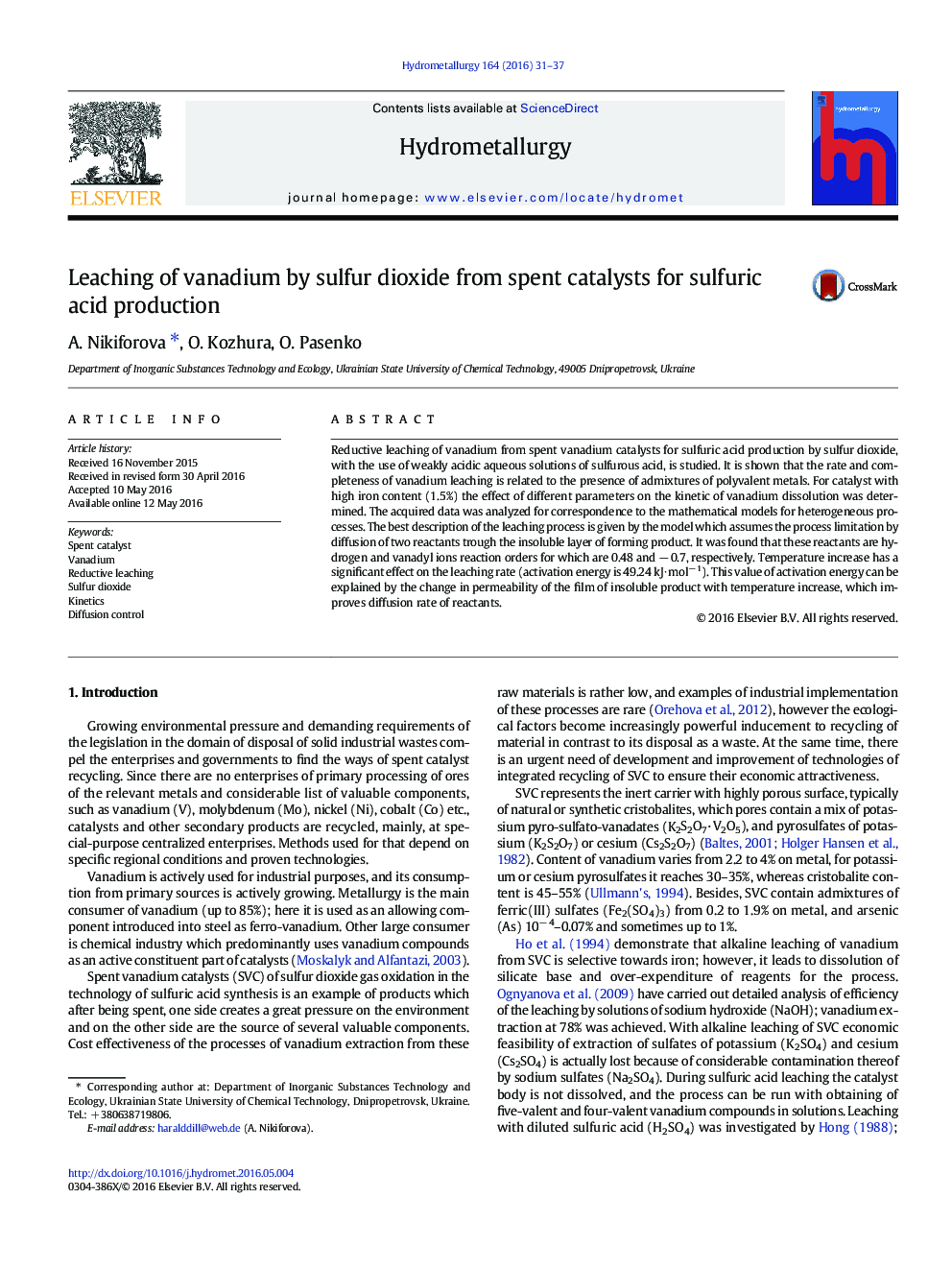| Article ID | Journal | Published Year | Pages | File Type |
|---|---|---|---|---|
| 6659161 | Hydrometallurgy | 2016 | 7 Pages |
Abstract
Reductive leaching of vanadium from spent vanadium catalysts for sulfuric acid production by sulfur dioxide, with the use of weakly acidic aqueous solutions of sulfurous acid, is studied. It is shown that the rate and completeness of vanadium leaching is related to the presence of admixtures of polyvalent metals. For catalyst with high iron content (1.5%) the effect of different parameters on the kinetic of vanadium dissolution was determined. The acquired data was analyzed for correspondence to the mathematical models for heterogeneous processes. The best description of the leaching process is given by the model which assumes the process limitation by diffusion of two reactants trough the insoluble layer of forming product. It was found that these reactants are hydrogen and vanadyl ions reaction orders for which are 0.48 and â 0.7, respectively. Temperature increase has a significant effect on the leaching rate (activation energy is 49.24 kJ â molâ 1). This value of activation energy can be explained by the change in permeability of the film of insoluble product with temperature increase, which improves diffusion rate of reactants.
Related Topics
Physical Sciences and Engineering
Chemical Engineering
Chemical Engineering (General)
Authors
A. Nikiforova, O. Kozhura, O. Pasenko,
